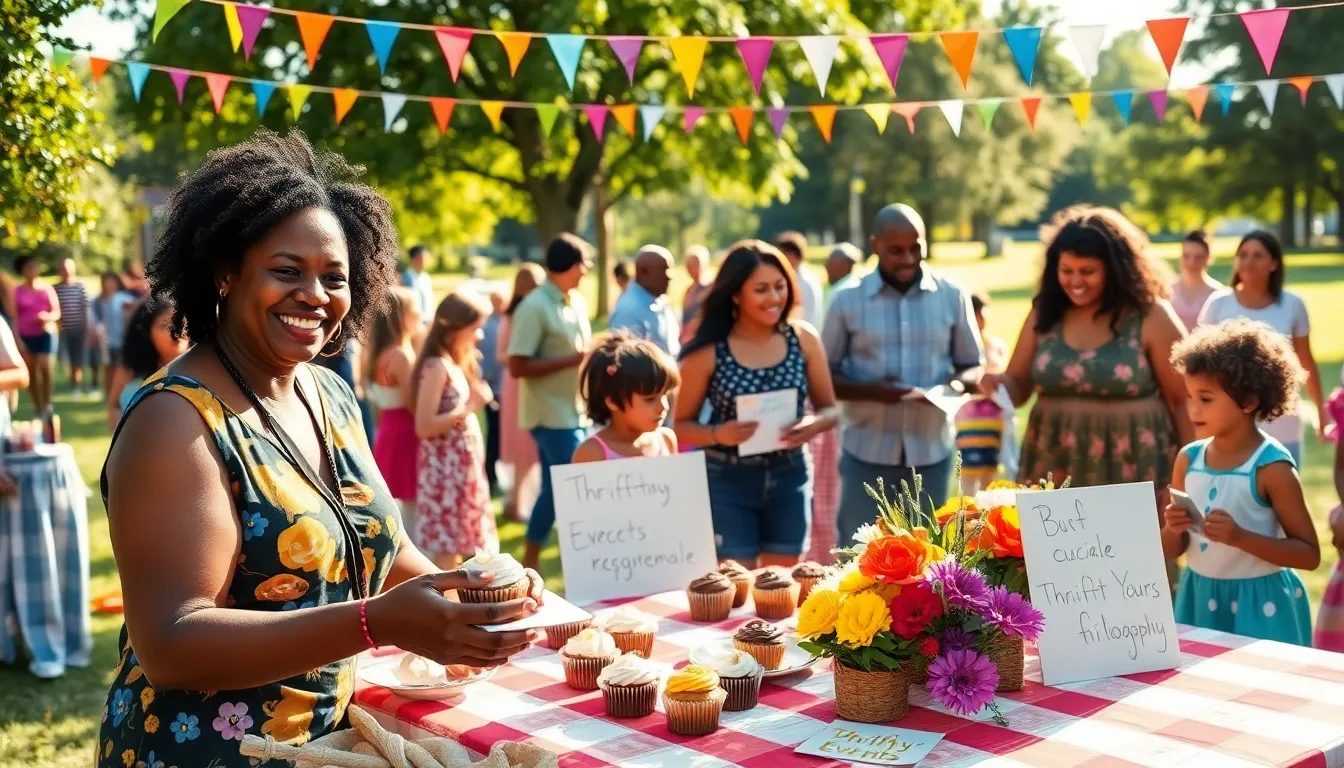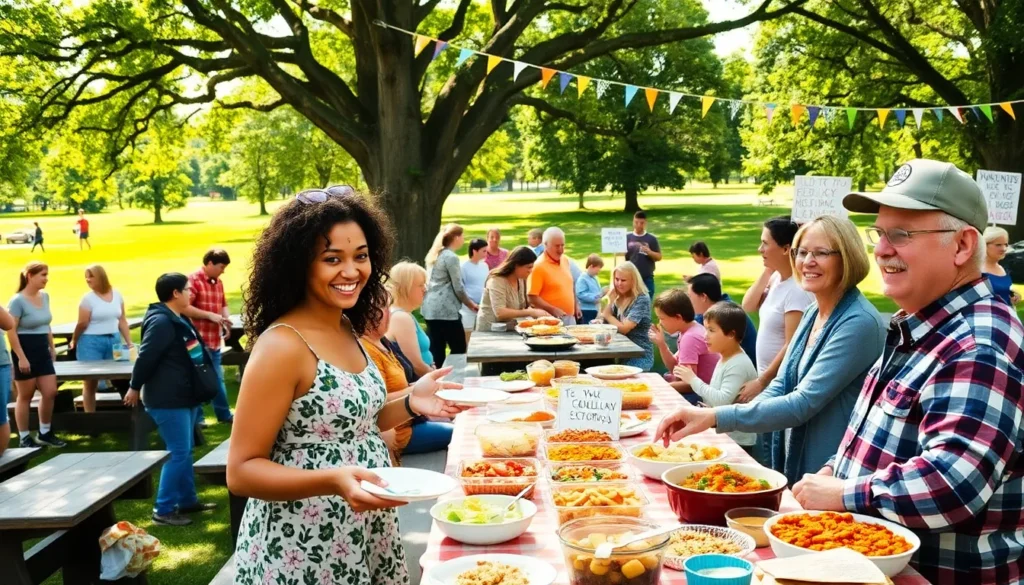Table of Contents
ToggleIn an era where every dollar counts, the idea of hosting a thrifty event resonates more than ever. Whether it’s a community gathering, a fundraiser, or a festive celebration, understanding the intricacies of planning budget-friendly events can unlock a world of possibilities. This article dives deep into the essence of ThriftyEvents, exploring diverse categories of events, essential planning tips, budget-friendly strategies, community engagement methods, and real-life success stories that illustrate what can be achieved with creativity and resourcefulness.
Understanding ThriftyEvents: A Comprehensive Overview

ThriftyEvents is a platform that promotes resourceful and economical event planning. It empowers individuals and communities to organize events without financial strain, focusing on creativity and innovation instead of lavish expenditures. This concept revolves around maximizing the utility of available resources, whether they are monetary, time-related, or material. By prioritizing sustainability, community involvement, and local partnerships, ThriftyEvents serves as a practical guide to hosting inclusive gatherings that bring people together.
Understanding the philosophy behind ThriftyEvents can help organizers not only save money but also create memorable experiences that strengthen community bonds. Whether it’s a potluck dinner, a yard sale, or a neighborhood cleanup, these events underline the belief that celebrations don’t have to come with a hefty price tag. Also, ThriftyEvents emphasizes innovative ideas, collaboration, and a focus on inclusivity, allowing every budget to have its share of fun.
Exploring Thrifty Events: Types and Categories
ThriftyEvents encompasses various types of gatherings and activities that emphasize low-cost yet impactful strategies. Here are some popular categories:
Community Gatherings
These events foster a sense of belonging and connection among residents, ranging from neighborhood block parties to communal potlucks. They are typically organized with minimal financial investment and rely on community participation for food, entertainment, and activities.
Fundraising Events
Fundraisers can be organized economically, focusing on activities that engage supporters. Whether it involves bake sales, charity runs, or thrift auctions, these events use community resources and volunteers, enabling fundraising while keeping costs low.
Workshops and Classes
Hosting free or low-cost educational workshops is another category that fits the ThriftyEvents mold. These can cover a range of subjects, from crafting and cooking to financial literacy, encouraging knowledge sharing among community members without the need for hefty fees.
Seasonal Festivals
Seasonal celebrations, such as harvest festivals or winter fairs, can be organized with minimal financial resources. Utilizing local parks, community centers, or school grounds allows organizers to keep venue costs low while ensuring the events are well-attended.
How to Plan a Successful Thrifty Event
Planning a successful thrifty event involves several key steps:
Set Clear Goals
Clarifying the purpose of the event is crucial. Whether the goal is to raise funds for a cause, build community connections, or simply celebrate a local tradition, having a clear objective helps streamline the planning process.
Assemble a Team
Gathering a group of committed volunteers can lighten the workload significantly. Delegating tasks according to individuals’ skills and interests not only ensures a well-organized event but also fosters community spirit.
Create a Budget
Establishing a budget, albeit limited, is essential. List all potential expenses and explore in-kind contributions or sponsorships to offset costs. Keep track of all expenditures to avoid overspending.
Promote the Event
Use social media platforms, community bulletin boards, and local newsletters to spread the word. Engaging visuals and compelling messages can attract more participants and stakeholders.
Evaluate the Outcome
After the event, take time to assess what went well and what could be improved for future events. Collecting feedback from participants can provide valuable insights for future planning.
Budget-Friendly Tips for Thrifty Events
Saving money while organizing an event requires creativity and resourcefulness. Here are some budget-friendly tips:
Use Local Resources
Reach out to local businesses or community centers that may offer venues or supplies for free or at a reduced cost. Establish partnerships that benefit both parties.
Encourage Potluck Style Meals
For food-related gatherings, encouraging participants to bring a dish to share can save significant amounts on catering costs. It also allows for a varied menu and enhances community participation.
DIY Decorations and Activities
Creating your own decorations, games, and activities not only saves money but also adds a personal touch to the event. Groups can come together for craft sessions leading up to the event, making for a fun pre-event gathering.
Leverage Technology
Use free online tools for RSVP management, event promotion, and feedback collection. Social media is a powerful avenue for reaching a wider audience without financial strain.
Engaging Your Community: Strategies for Participation
Community engagement is crucial in ensuring the success of ThriftyEvents. Here are some strategies:
Foster a Sense of Ownership
Encouraging community members to take ownership of specific aspects of the event can enhance participation. This could entail forming committees or asking residents to volunteer for key tasks.
Offer Incentives
Consider creating incentives for participation, such as raffle tickets or recognition for volunteers. Even small tokens can motivate people to get involved and contribute positively.
Communicate Openly
Transparency about event goals, funding, and the roles of participants promotes trust and encourages broader participation. Host pre-event meetings to discuss plans and gather input, ensuring everyone feels valued and included.
Celebrate Community Achievements
Recognizing efforts during the event helps build morale and encourages future participation. Create moments to thank volunteers, showcase local talent, and celebrate community milestones.
Success Stories: Inspiring Thrifty Event Case Studies
Real-life examples of successful ThriftyEvents can serve as both inspiration and practical insight:
The Local Book Fair
A community organized book fair that utilized a local park saw over 300 participants with a budget of under $500. Local authors volunteered to read excerpts, and attendees brought their own books to trade. The event not only promoted literacy but also cultivated a closer-knit community.
Annual Charity Run
A neighborhood charity run organized with minimal costs raised over $5,000 for local charities. The organizers partnered with local businesses for prizes, and volunteers led the preparation, significantly cutting down expenses.
Seasonal Harvest Festival
A community in a suburban area created a harvest festival that brought together over 1,000 locals. Using the local school yard as the venue, the event featured homemade food stalls, games orchestrated by families, and activities that highlighted local artisans. It all proved that a meaningful celebration could be made without very costly.
Conclusion
ThriftyEvents exemplifies the idea that impactful gatherings do not have to rely on extravagant budgets. With thoughtful planning, community engagement, and innovative budgeting strategies, individuals and organizations can create memorable experiences that foster connections and promote inclusivity. By exploring the types of events possible, learning from successful case studies, and implementing resourceful strategies, anyone can take charge of event planning, proving that the best gatherings often come from the heart, not the wallet.







